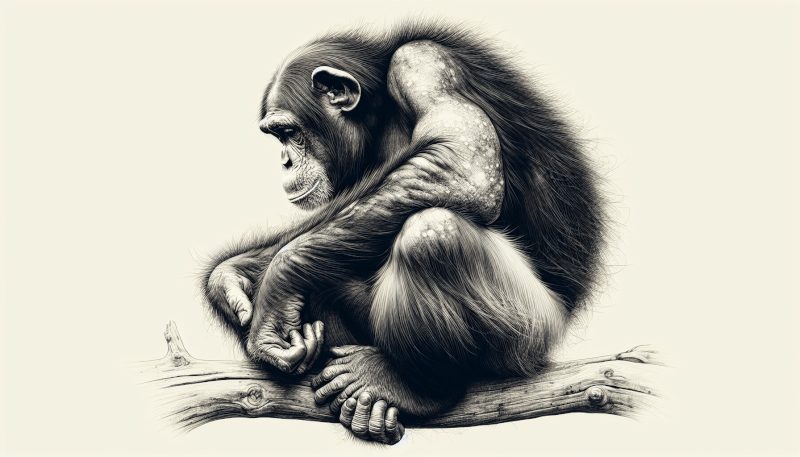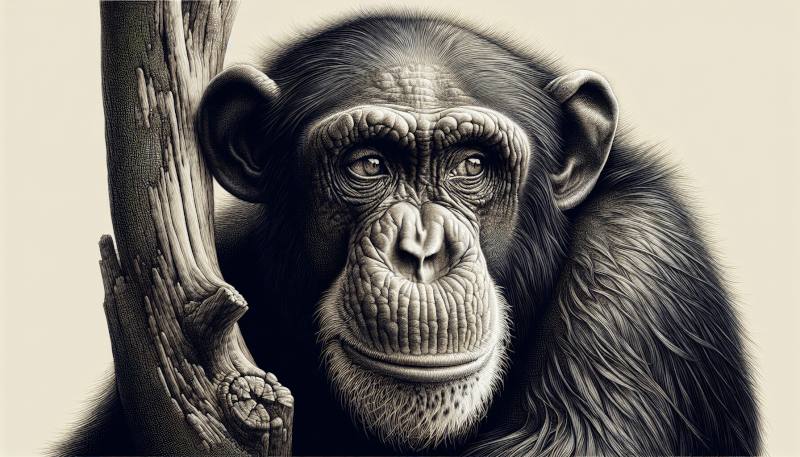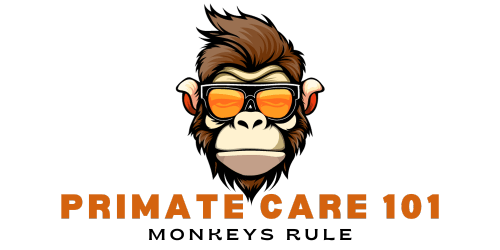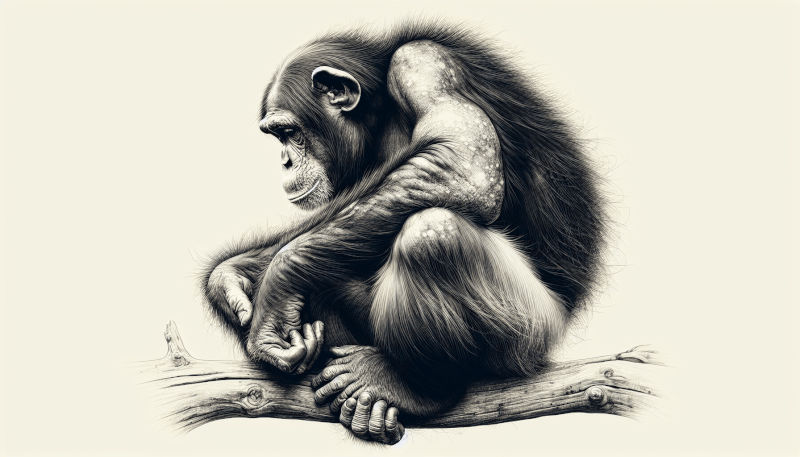In this article, we will explore the fascinating world of primate communities and delve into the impact that social disruption has on these fascinating creatures. As we journey into the lives of primates, we will discover how disruptions in their social structures can have far-reaching consequences, affecting everything from their daily interactions to their long-term survival. Join us as we unravel the intricate dynamics of primates and gain a deeper understanding of the profound impact that social disruption can have on their communities.

Overview
In this article, we will explore the concept of social disruption in primate communities and its impact on their social structure. Social disruption refers to the disturbances or changes in the social organization and behavior of primate groups, which can result in a breakdown of social bonds, increased aggression, and a decline in reproductive success. We will examine the various factors contributing to social disruption, including deforestation, climate change, human activities, and predator pressure. Additionally, we will discuss the implications of social disruption for conservation efforts and highlight key strategies to mitigate its effects.
Definition of Social Disruption
Social disruption in primate communities refers to the disturbances or changes in the social organization and behavior of primate groups. It is characterized by a breakdown of social bonds, alterations in social hierarchies, an increase in aggression and competition, a decline in reproductive success, and disruptions in parental care. These disruptions can occur due to various environmental and anthropogenic factors, ultimately leading to significant consequences for primate populations and their overall social structure.
Primate Communities and their Social Structure
Primate communities are characterized by complex social structures that play a crucial role in their survival and well-being. These social structures vary among different primate species, with some exhibiting hierarchical systems and others relying on egalitarian relationships. In hierarchical systems, individuals are ranked within a dominance hierarchy, which influences access to resources, mating opportunities, and social interactions. Understanding the social structure of primate communities is essential for comprehending the impact of social disruption.
Factors Leading to Social Disruption
Deforestation and Habitat Loss
Deforestation and habitat loss pose significant threats to primate communities, leading to social disruption. The destruction of forested areas eliminates vital resources, disrupts home ranges, and forces primate groups to disperse or face increased competition. Reduced food availability, fragmentation of habitats, and increased human-wildlife interactions are primary consequences of deforestation, ultimately impacting primate social structure.
Climate Change and Alteration of Food Availability
Climate change presents additional challenges for primate communities by altering food availability. Changes in rainfall patterns, temperature, and vegetation distribution can lead to a scarcity of preferred food sources. This scarcity triggers increased competition among individuals within primate groups, leading to social disruptions such as increased aggression and changes in foraging behaviors.
Human Activities and Intrusions
Human activities, including poaching, habitat encroachment, and pollution, significantly impact primate communities. Primate populations often suffer from direct harm due to hunting for bushmeat or the pet trade. Furthermore, human encroachment into primate habitats disrupts their natural behaviors, compromising their social structure. Increased human-wildlife interactions can result in heightened stress levels, reduced reproductive success, and a breakdown of social bonds within primate groups.
Predator Pressure
Predator pressure is another factor that contributes to social disruption in primate communities. Predatory threats, such as increased predation risk by large carnivores, can lead to changes in primate behavior and social dynamics. The fear of predation may alter movement patterns, group cohesion, and feeding habits, ultimately influencing the overall social structure and dynamics of primate communities.

The Impact of Social Disruption on Primate Social Structure
Social disruption has significant consequences for primate social structure. The breakdown of social bonds and hierarchies can lead to increased stress levels, social instability, and reduced cooperation within primate groups. This breakdown often results in increased aggression and competition for resources, as individuals struggle to establish new social relationships and secure their place in the hierarchy. These changes in social structure can have a cascading effect on various aspects of primates’ lives, including their reproductive success and parental care behaviors.
Breakdown of Social Bonds and Hierarchies
Social disruption often leads to a breakdown of social bonds and hierarchies within primate groups. This breakdown can be a result of group dispersal, fragmentation of social units, or the loss of dominant individuals. Without stable social bonds, primate groups may struggle to maintain cooperative behaviors, share resources, and organize collective defense against threats. The breakdown of hierarchies can also lead to increased competition, as individuals vie for access to limited resources and mating opportunities.

Increase in Aggression and Competition
Social disruption can trigger an increase in aggression and competition among individuals within primate groups. Changes in social dynamics and the loss of social bonds may lead to intensified inter-group aggression and intra-group competition. Increased aggression can result in injuries, stress, and potential fatalities within primate communities. Furthermore, competition for limited resources such as food and mates can lead to decreased overall fitness and reproductive success for individuals affected by social disruption.
Decline in Reproductive Success
One of the significant impacts of social disruption on primate communities is the decline in reproductive success. Disruptions in social structure can disrupt mating patterns, limit access to potential mates, and reduce breeding opportunities. Competition and changes in social dynamics may lower reproductive success rates, leading to declining population numbers and genetic diversity within primate communities. These declines in reproductive success can have long-term consequences for the survival and viability of primate populations.

Disruption in Parental Care
Another consequence of social disruption is the disruption in parental care behaviors within primate communities. Stable social structures often support cooperative breeding systems, where multiple individuals contribute to the care and protection of offspring. However, social disruption can lead to the loss of cooperative breeding and parenting behaviors as individuals struggle to establish new social relationships and maintain social stability. This disruption in parental care can negatively impact the survival and development of primate offspring, further exacerbating the challenges faced by primate communities.
Implications for Conservation Efforts
Understanding the impact of social disruption on primate communities is crucial for effective conservation efforts. Conservation strategies aiming to mitigate the effects of social disruption must consider the following implications:
Impact on Primate Populations
Social disruption can have severe consequences for primate populations, including declining numbers, reduced genetic diversity, and increased vulnerability to external threats. Conservation efforts must prioritize addressing the underlying causes of social disruption to safeguard the long-term survival of primate species.
Conservation Strategies to Mitigate Social Disruption
To mitigate social disruption, conservation strategies should focus on addressing the factors leading to it. This includes implementing measures to combat deforestation and habitat loss, promoting sustainable land-use practices, and reducing human-wildlife conflicts. It is essential to engage local communities, promote education and awareness, and develop policies that foster coexistence between humans and primates.
Importance of Protected Areas
Protected areas play a crucial role in the conservation of primate communities and mitigating social disruption. By preserving habitats and regulating human activities, protected areas provide sanctuary for primates, allowing them to maintain their natural social structure and behaviors. Expanding and effectively managing protected areas is vital for ensuring the long-term survival and well-being of primate populations.
In conclusion, social disruption in primate communities has far-reaching consequences for their social structure, behavior, and overall well-being. Factors such as deforestation, climate change, human activities, and predator pressure contribute to social disruption, leading to a breakdown of social bonds, increased aggression, and a decline in reproductive success. Conservation efforts must prioritize addressing these factors and focus on mitigating the effects of social disruption to ensure the survival and conservation of primate communities. By understanding the impact of social disruption, we can work towards creating a sustainable future where primate communities thrive in their natural habitats.



